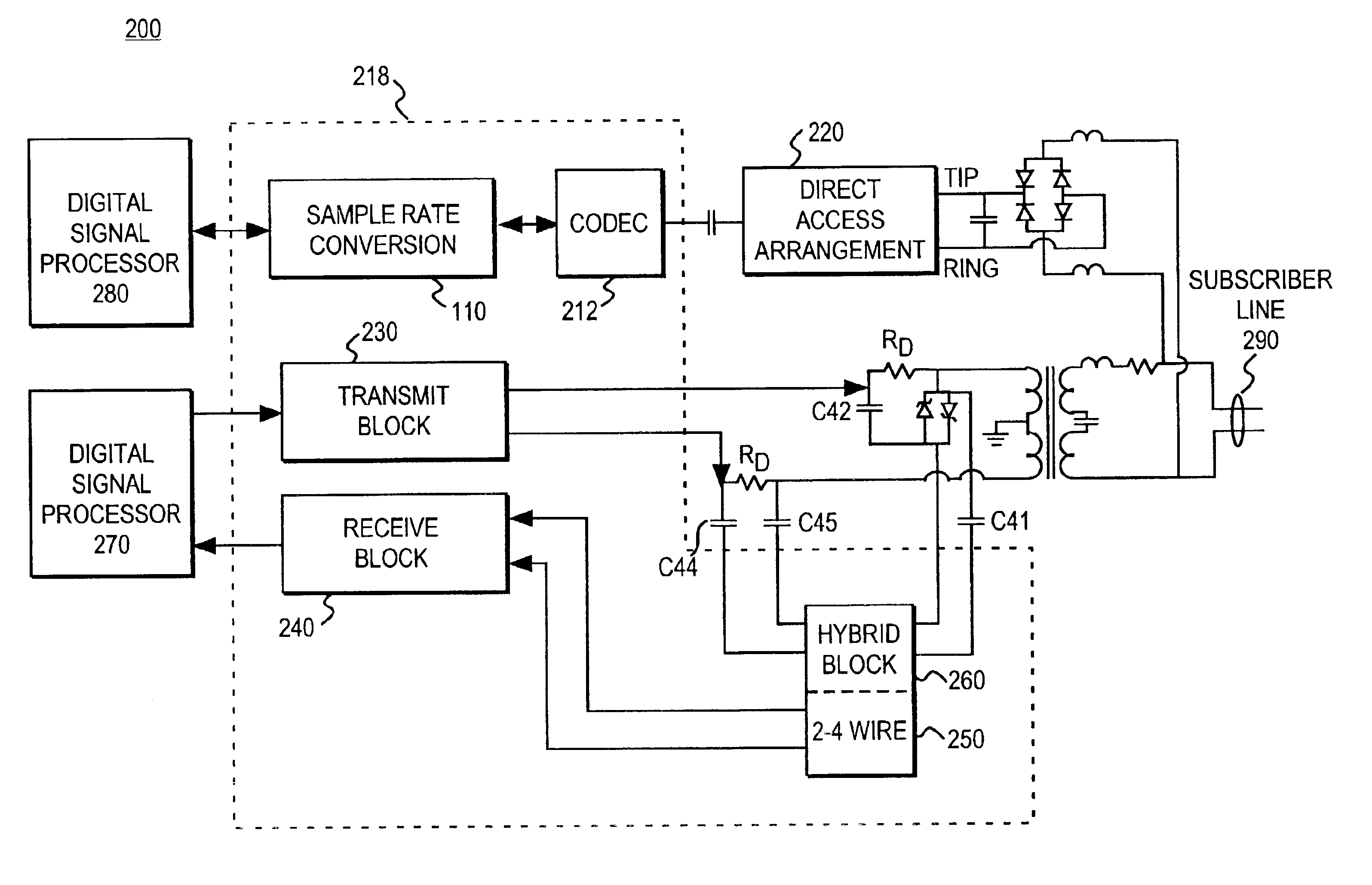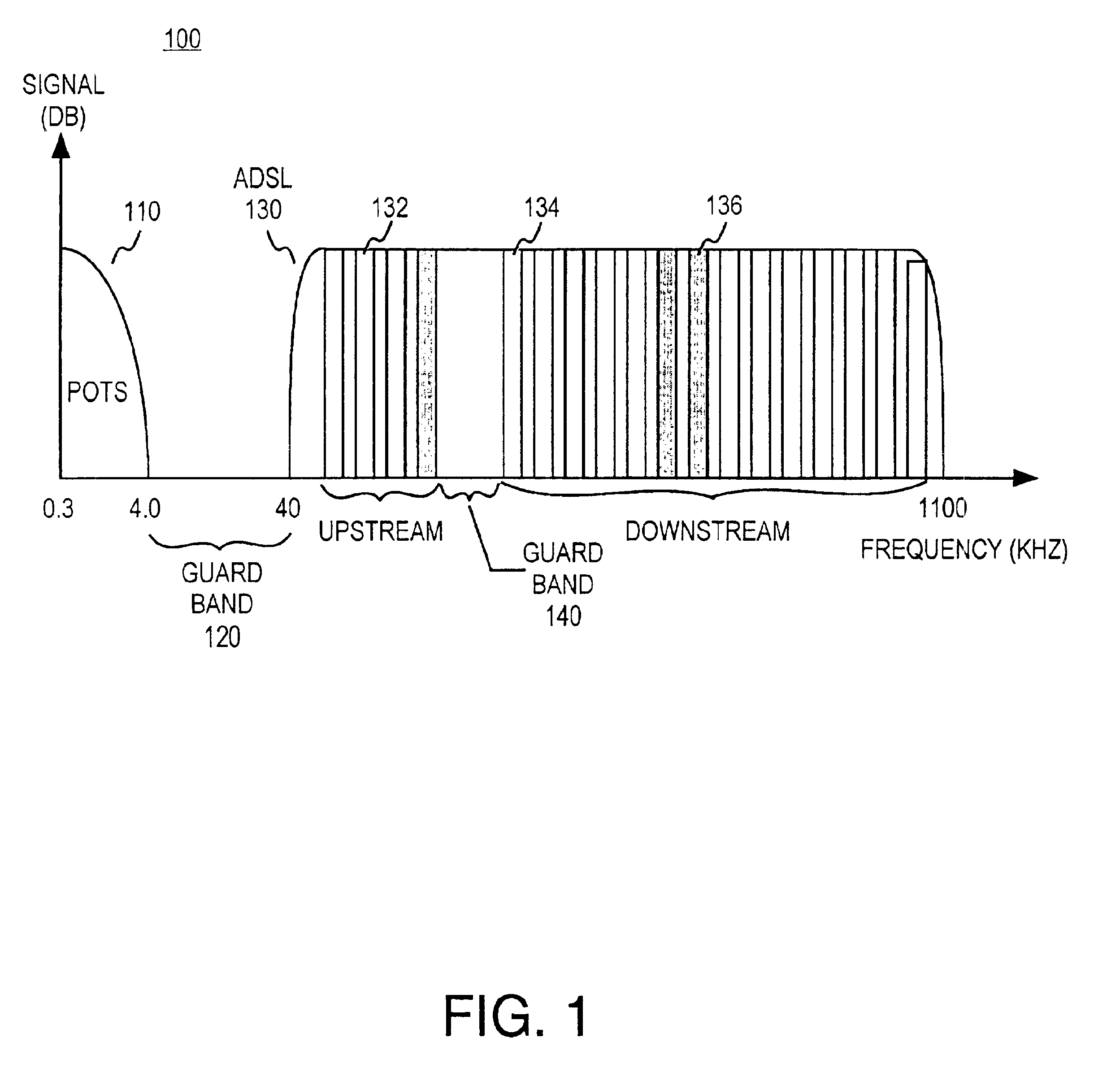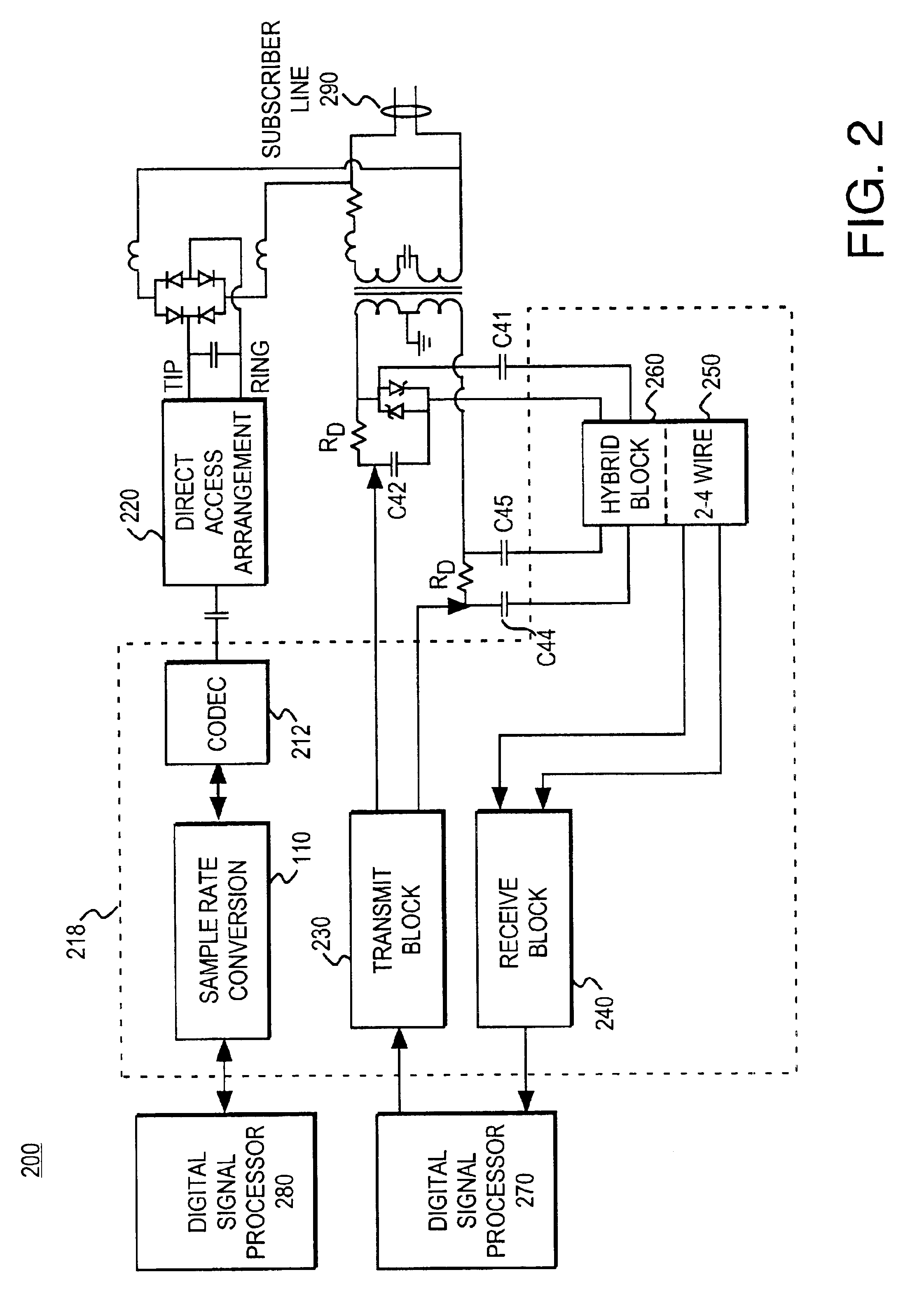Architecture for a digital subscriber line analog front end
a digital subscriber line and analog front end technology, applied in the field of telecommunications, can solve the problems of high order, distortion and noise in the system, and inability to provide simultaneous voice communications on the line, and achieve the effect of high degree of integration
- Summary
- Abstract
- Description
- Claims
- Application Information
AI Technical Summary
Benefits of technology
Problems solved by technology
Method used
Image
Examples
Embodiment Construction
[0026]The International Telecommunication Union (ITU) has set forth a series of recommendations for subscriber line data transmission. These recommendations are directed towards communications using the voiceband portion of the communications spectrum (“V.x” recommendations) as well as communications utilizing frequency spectrum other than the voiceband portion (e.g., “xDSL” recommendations).
[0027]The V.x recommendations have evolved over time to support ever higher data rates. ITU-T Recs. V.22 bis, V.32, V.32 bis, V.34, and V.90, for example, relate to increasing bit-per-second data rates of 2400, 9600, 14400, 33600, and 56000 bit / sec. Compression standards such as V.42 bis can further increase the effective data rates. Generally, voiceband modems will use a recommended handshaking protocol to negotiate the highest possible data rate.
[0028]ITU documentation for the more recent recommendations related to voiceband communications includes “Rec. V.90 (September 1998)—A digital modem a...
PUM
 Login to View More
Login to View More Abstract
Description
Claims
Application Information
 Login to View More
Login to View More - R&D
- Intellectual Property
- Life Sciences
- Materials
- Tech Scout
- Unparalleled Data Quality
- Higher Quality Content
- 60% Fewer Hallucinations
Browse by: Latest US Patents, China's latest patents, Technical Efficacy Thesaurus, Application Domain, Technology Topic, Popular Technical Reports.
© 2025 PatSnap. All rights reserved.Legal|Privacy policy|Modern Slavery Act Transparency Statement|Sitemap|About US| Contact US: help@patsnap.com



